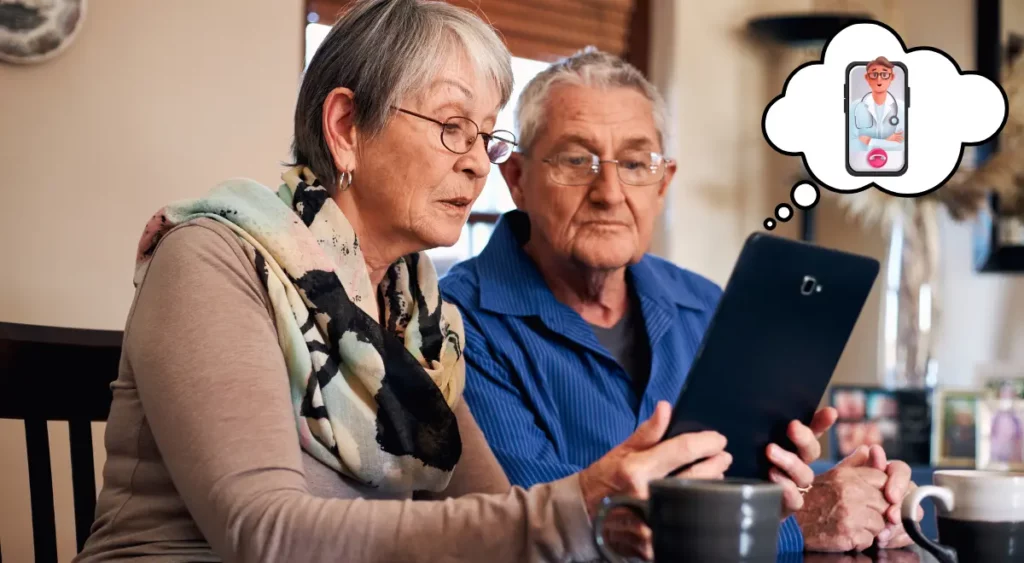Closing the Care Gaps in Elderly Transitions with Transitional Care Management (TCM)

Elderly patients leaving nursing homes, skilled nursing facilities (SNFs), or assisted living often face a high risk of complications and readmission. For example, almost 25% of Medicare patients with heart failure discharged home from an SNF was readmitted within 30 days. Transitional Care Management (TCM) programs were introduced to bridge these care gaps by coordinating follow-up and support for 30 days post-discharge. Transitional Care Management (TCM) is a CMS‐defined service (CPT codes 99495 and 99496) that requires early outreach, timely outpatient visits, and ongoing care coordination. Studies show that Transitional Care Management (TCM) significantly lowers readmissions and improves outcomes for seniors: timely post-discharge follow-up can cut 30-day readmissions by double digits, and one Medicare analysis found TCM was associated with an 11% reduction in post-discharge spending and a drop in 30-day mortality. By proactively managing the transition home, TCM helps payers, SNFs, and providers meet clinical and financial goals.
Table of Contents
ToggleWhat Is Transitional Care Management (TCM)?
TCM is a 30-day post-discharge care bundle for Medicare (and similar payer) beneficiaries who need moderate to high complexity follow-up. In 2013 CMS established CPT codes 99495 and 99496 to reimburse physicians and practitioners for this work. These codes apply when a patient leaves one of several inpatient settings (e.g. hospital, psychiatric unit, long-term care hospital, rehabilitation, skilled nursing facility, etc.) and returns to the community. Transitional Care Management (TCM) supports all health needs during this vulnerable period – medical, psychosocial, and functional – so patients do not “slip through the cracks.” The key requirements are:
- Early Patient Contact (within 2 business days): The care team must initiate an interactive communication (phone call, telehealth, or portal message) with the patient and/or caregiver within two business days of discharge.
- Comprehensive Care Coordination: Throughout the 30-day period, providers (often nurses or care managers under a physician’s supervision) must coordinate the patient’s care. This includes reviewing the discharge summary, scheduling follow-up appointments, educating the patient/family, arranging referrals, and connecting them to community resources.
- Medication Reconciliation: A pharmacist or clinician must review and reconcile all medications by the time of the first follow-up visit. This ensures errors or omissions from the hospital/nursing home do not cause adverse events.
- Face-to-Face Visit: The patient must be seen by an eligible provider (physician, NP, PA, etc.) within a specified time period based on complexity. CPT 99495 (moderate complexity) requires a visit within 14 days of discharge; code 99496 (high complexity) requires a visit within 7 days. (These visits can be in person or telehealth.)
These components ensure that vulnerable seniors get prompt follow-up and sustained support once they leave the facility. CMS’s TCM rules explicitly include skilled nursing facilities and nursing homes among the settings from which patients can be discharged into Transitional care management (TCM). In practice, any clinician (or care team) implementing TCM must track these steps closely to qualify for reimbursement.
Key Components of Transitional Care Management (TCM) Services
Transitional Care Management goes beyond a single visit. During the 30-day TCM period, providers deliver a mix of communications, clinical services, and care management tasks. CMS and clinical guidance emphasize the following:
- Interactive Contact within 2 Days: Prompt outreach by phone, electronic messaging, or face-to-face to check on the patient’s condition and needs.
- Non–Face-to-Face Care Coordination: Ongoing case management through 30 days—for example, reviewing discharge documents, arranging home health or equipment, educating patients and caregivers, and monitoring symptoms. Clinical staff can provide these services under the physician’s direction. This continuity closes gaps in care and catches issues early.
- Medication Management: Performing medication reconciliation by the time of the follow-up visit. By reviewing all drugs prescribed at discharge versus pre-admission, providers prevent dangerous interactions or duplications, a common cause of readmission.
- Scheduled Follow-Up Visit: A comprehensive evaluation (in-office or via telehealth) by a qualified clinician within 7 or 14 days of discharge, depending on the patient’s complexity. This visit is not billed separately; it is part of the TCM service bundle.
- Scheduled Follow-Up: The patient completes a comprehensive evaluation by the appropriate provider (in-person or tele-health) within 7- or 14-days post-discharge (dependent upon complexity of the patient). This visit is not charged separately but included in the TCM service package. Summary of these requirements is available in CMS guidance. They make sure that coordinated care, such as medication review, patient education and linkage to community resources, is provided for a full month following discharge. Indeed, TCM continues the handover from TCM.
Benefits of TCM for Elderly Patients
By design, TCM addresses the very factors that lead to avoidable readmissions and care gaps in older adults. Clinical studies and CMS analyses have documented multiple benefits:
- Lower Readmission Rates: Patients receiving TCM support have significantly fewer hospitals return visits. For example, providers using TCM codes saw a 0.3–0.5 percentage point absolute drop in 30- and 90-day readmission rates. Other studies report even larger improvements: patients who connected with primary care within 7 days were 12–24% less likely to be readmitted to the hospital within 30 days. A University of Kentucky study found an 86.6% reduction in readmission odds among patients receiving TCM services. For payers and SNFs, these reductions translate to better quality scores and fewer penalties under readmission-reduction programs.
- Lower Costs and Improved Outcomes: Because readmissions are costly, TCM produces financial as well as clinical gains. A Medicare cohort study found that TCM patients had 11% lower total spending in the post-discharge period. TCM has also been linked to modest declines in mortality: that same study saw 30-day mortality fall from 1.6% to 1.0% with TCM care. In short, TCM advances the Triple/Quadruple Aim by improving patient health while reducing unnecessary utilization.
- Improved Medication Adherence: Almost half of older adult’s experience medication discrepancies at hospital discharge. TCM’s required medication reconciliation ensures these are caught and corrected. By aligning prescriptions and educating patients, TCM increases the likelihood that seniors take medications as directed. This avoids adverse drug events (a leading cause of post-acute readmission) and improves chronic disease control.
- Continuity and Patient Engagement: Since TCM requires early outreach and follow-up, patients receive conflicting messages about their plan of care. Caregivers are taught warning signs (daily weighing, diet/meds management, etc.) and when to ask for help. This continuity of care – along with appropriate collaborations, referrals including home health therapy and specialty care – fills in service gaps. Payers consider this to be better coordination and stewardship of care management funds, while SNF administrators recognize that their residents are safely transitioned back into the community.
- In summary, transitional care management delivers measurable benefits for older adults and the systems that serve them. Published analyses consistently show TCM bridges post-discharge gaps, yielding lower readmissions and cost savings. For care coordination teams, TCM is a proven tool to optimize outcomes during the critical 30-day window.
Billing Codes and Reimbursement Models
Medicare pays for TCM under CPT 99495 (moderate complexity) and 99496 (high complexity). CMS’s official TCM booklet spells out the billing rules: 99495 require medical decision-making of at least moderate complexity, communication within 2 days of discharge, and a visit within 14 days. CPT 99496 applies when decision-making is high and a visit occurs within 7 days. Both codes cover all required TCM services (so the face-to-face visit is not billed separately). CMS even allows these to be provided via telehealth when appropriate.
Medicare Advantage and Managed Care
Most Medicare Advantage plans have the same rules, as MA enrolees receive the same benefits as fee-for-service Medicare. In fact, MA plans have powerful incentives to embrace TCM as a means to counteract expensive readmissions. Private insurance is also following transitional-care billing. And many of the major payers now reimburse TCM-type services under care coordination benefit designs or value-based agreements. (Medicaid, for dual-eligible patients, generally serves as a secondary payer against cost-sharing associated with TCM services.)
Medicaid Coverage for TCM
TCM coverage is different in each state; however acceptance and usage are increasing. TCM has been increasingly incorporated into managed care or primary care programs in some state Medicaid systems. Mass Health, for instance, codifies CPT code 99495 and 99496 into its primary care code set – acknowledging these services in its payment structure. Other states use managed care waivers or PACE programs to pay for care transitions for high-risk older adults. Although there are differences in policies, most Medicaid Managed
Regardless of payer, the principle is the same: transitional care reduces downstream costs. By reimbursing TCM, payers (Medicare, Medicaid, or commercial) actively encourage providers to invest in the extra work of post-discharge outreach. For SNF administrators and care coordinators, understanding these codes can help secure revenue for transitional services while aligning with payer goals of better outcomes.
Implementing TCM to Close Care Gaps
To leverage TCM effectively, organizations should embed it within a broader care coordination framework. Key steps include:
- Identify Eligible Patients: Flag elderly residents approaching discharge from SNFs, nursing homes, or assisted living. Coordination teams must be alerted at the time of discharge planning to ensure patients are enrolled in TCM programs without delay
- Rapid Outreach: Ensure a nurse or care manager contacts the patient/caregiver within two business days of discharge (often day 1 or 2). This call reviews discharge instructions and medication changes and schedules the follow-up visit.
- Schedule Follow-Up: Book the required face-to-face (or telehealth) visit with a physician/NP/PA within the 7- or 14-day window. This ensures the mandated evaluation happens on time.
- Coordinate Services: During the 30-day window, use electronic health records or care platforms to track interventions – e.g. home health visits, therapy appointments, medication delivery, durable equipment – so nothing is overlooked.
- Document Thoroughly: Good documentation is essential. Providers must note all components (dates of discharge, contact, visit, MDM complexity, etc.) to justify billing the TCM code.
Modern care coordination solutions can streamline these tasks. For example, Health Arc’s platform integrates TCM into Chronic Care Management and Care Coordination workflows, ensuring each step is prompted and recorded. Technology can send alerts to case managers, track pending tasks (like med rec), and even help generate the TCM billing claim. Using such tools, payers and SNFs can scale TCM services to large populations of seniors without missing opportunities.
Closing the Gaps with HealthArc
Transitional Care Management is a proven strategy to bridge care gaps for older adults transitioning out of post-acute settings. By ensuring timely follow-up, comprehensive education, and coordinated support, TCM programs reduce readmissions and improve clinical outcomes. Medicare pays specifically for this work (CPT 99495/99496), and many Medicaid and commercial plans also recognize its value. Implementing TCM often goes together with chronic care and care coordination initiatives, making it easier to keep frail seniors stable at home.
It is here where HealthArc’s digital health solutions come into play. Our Chronic Care Management (CCM) and Care Coordination services enable teams to better identify patients in eligibility, simplify workflows and capture all TCM elements. Health Arc leverages TCM, CCM & RPM to help payers and SNF provider’s bridge gaps in care continuity; enhance patient outcomes; and promote program compliance.
Enhance outcomes for your elderly population by building a robust Transitional Care Management program. Contact HealthArc today to see how our integrated care coordination tools can streamline TCM delivery, improve patient satisfaction, and lower total costs for your organization.
Frequently Asked Questions (FAQs)
Transitional Care Management (TCM) is a CMS-defined, 30-day post-discharge service that coordinates care for patients transitioning from hospitals, skilled nursing facilities, or rehabilitation centers back into the community. It includes early outreach, medication reconciliation, and follow-up visits.
Elderly patients face a higher risk of complications and hospital readmissions after discharge. TCM helps reduce these risks by ensuring medication accuracy, early follow-up, and continuous care coordination through the first 30 days at home.
By maintaining early contact, reviewing medications, and coordinating follow-up visits, TCM identifies issues before they escalate. Studies show that patients receiving TCM services experience 12–24% fewer readmissions within 30 days.
TCM is billed under CPT 99495 (moderate complexity, visit within 14 days) and CPT 99496 (high complexity, visit within 7 days). Both codes include all post-discharge coordination activities and can be billed once per 30-day period.
Providers must initiate interactive communication with the patient or caregiver within two business days of discharge via phone, portal, or telehealth to meet CMS requirements.
- Early contact (within 2 business days)
- Medication reconciliation
- Care coordination across multiple providers
- Face-to-face follow-up within 7–14 days
Yes. Medicare reimburses TCM under CPT codes 99495 and 99496. Many Medicaid programs and Medicare Advantage plans also cover TCM services due to their proven impact on reducing readmissions and improving patient outcomes.
While CCM focuses on ongoing monthly management of chronic diseases, TCM is a time-limited, 30-day service focused on safe transitions after discharge. Many providers use both together to improve continuity of care.
Yes. CMS allows both the initial contact and the follow-up visit to be conducted via telehealth when clinically appropriate, provided all documentation requirements are met.
Patients discharged from hospitals, skilled nursing facilities (SNFs), rehabilitation centers, or psychiatric hospitals who require moderate or high-complexity follow-up care qualify for TCM.
TCM improves patient outcomes, lowers readmission rates, and reduces total cost of care. For payers, it enhances Star ratings and supports value-based reimbursement. For providers, it creates an additional billable service that aligns with quality goals.
Digital platforms like HealthArc automate TCM workflows—tracking discharge alerts, scheduling calls, recording follow-up visits, and generating compliance reports—to help providers scale care coordination efficiently.
- Identify eligible patients early during discharge planning.
- Assign a dedicated nurse or care coordinator.
- Ensure communication within 48 hours.
- Use EHR alerts to track TCM tasks and documentation.
- Conduct timely follow-up visits via in-person or telehealth channels.
Yes. TCM can be integrated with Chronic Care Management (CCM) and Remote Patient Monitoring (RPM) to create a complete post-acute and chronic care ecosystem.
- 11% lower post-discharge spending
- Reduced 30-day mortality (1.6% → 1.0%)
- Significant declines in readmissions and medication errors
Caregivers are central to TCM success. They assist with medication adherence, monitor symptoms, ensure appointment attendance, and communicate any changes in the patient’s condition to the care team.
TCM aligns directly with value-based care by improving clinical quality metrics, reducing unnecessary hospitalizations, and ensuring better patient experience—all key outcomes measured under CMS’s value-based models.
- Date of discharge
- Date/time of first contact
- Medical decision-making complexity
- Date of follow-up visit
- Summary of coordination activities
SNFs and assisted living centers that collaborate with TCM programs see fewer readmissions, improved patient satisfaction, and stronger payer relationships, enhancing overall care quality.
HealthArc’s care coordination platform integrates TCM, CCM, and RPM into one workflow—automating outreach reminders, documentation, and billing to help practices improve outcomes and streamline operations.
Sources:
Authoritative guidelines and studies from CMS, NIH-affiliated research, and federal health agencies support the benefits and billing rules of TCM
- Shorter Stays in a Skilled Nursing Facility Tied to Higher Risk for Readmission | NYU Langone News
- Transitional Care Management – Care Management Reimbursement, RHIhub
- Transitional Care Management Services Booklet
- Medicare transitional care management services’ association with readmissions and mortality – PMC
- MassHealth Primary Care Sub-Capitation: Program Service Code Set | Mass.gov
Most Recent Blogs
Categories
Related Blog
- June 5, 2024 | Read Time: 7 mins
CPT Code 99495 For Billing Transitional Care Management (TCM)
As defined by the American Medical Association (AMA), Current Procedural Terminology (CPT®)...
Learn More- May 27, 2024 | Read Time: 10 mins
What Is Transitional Care Management (TCM) & How It Works?
When a patient is admitted in the hospital to treat or manage...
Learn More- January 30, 2024 | Read Time: 7 mins
All About Transitional Care Management CPT Codes 99495 and CPT 99496
Once a patient is discharged from the hospital, getting him/her back to...
Learn More


